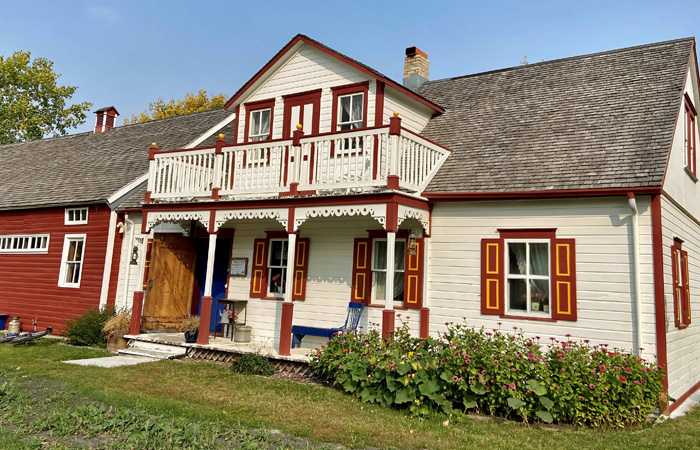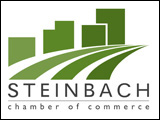Semlins (Sod-houses) were the first homes built for Mennonite pioneers in Manitoba. It took time to root themselves in a new land. The next phase of buildings were log houses. The tradition of housing livestock and humans in the same building continued until they could build a barn attached to the log house. These log houses have their origin in Eastern European countries, particularly Prussia in early Mennonite history. In Russia, by the mid-1800s, the Mennonites mostly built with brick. Then in the 1870s, building with logs made its reappearance in Manitoba.
The housebarn was a great way to shelter family, crops, and livestock. It is probable that by the mid-1880s, the majority of the Mennonites in Manitoba had constructed these permanent housebarn dwellings. However, as people moved out to individual homesteads in the twentieth century, the housebarn structure and its farm village system began to disappear. It was the end of a centuries-old tradition that had its origins in the Netherlands was continued in Prussia, in Russia and again in Canada.
Manitoba probably has the greatest collection of housebarns in the world! Besides the two great examples at MHV, there is also the original village of Neubergthal (now a Canada Heritage site), near Altona. Housebarns were usually situated on both sides of and perpendicular to the village street and are a symbol of community. Each family had their own farm, but supplies, encouragement and help was often shared between neighbours. Buildings like windmills, churches and schools were established together for the further good of the community.
Currently, the Chortitz Housebarn at MHV is needing a fair bit of renovation. The perimeter foundation has sunk into the ground in the fifty years since it arrived, cracking the central hearth. A Manitoba Building Sustainable Communities grant has been awarded to cover half the costs (March, 2020), but another $22,000 is still needed to do the project. Wouldn’t it be great to have demonstrations showing off the central cooking/heating system even in the dead of winter? MHV is hoping our community will support this project now. We will lose this grant if we do not complete the project by the end of this season. Please donate online, by mail or phone so we can finally complete this restoration that was interrupted by a global pandemic!
Once again, MHV is hosting ‘Demonstration Days’ every Saturday this summer. Milling wheat at the windmill, baking bread, blacksmithing, shingle making by the sawmill are just a few of the homestead activities that are planned. Starting July 31st there will also be made-to-order fresh waffles with vanilla sauce available at the Short Order Booth. Please note that at this time only visitors who can provide proof that they are fully vaccinated are allowed to visit our museum.




